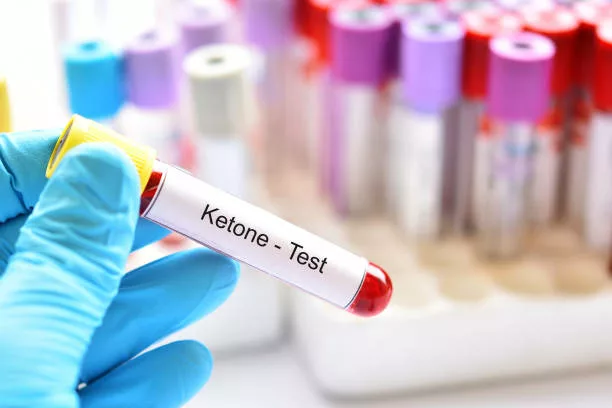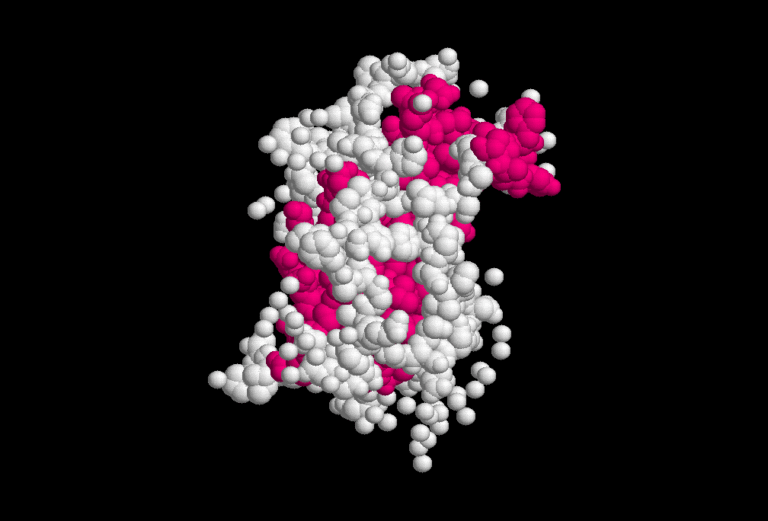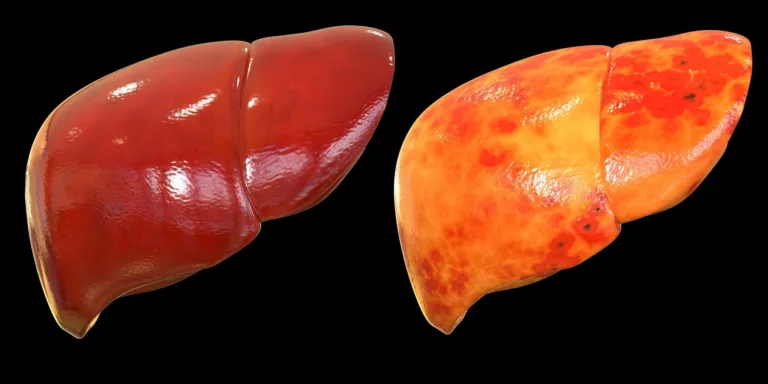Introduction
The ketogenic diet is a popular low-carbohydrate, high-fat diet that has gained popularity in recent years. Its unique macronutrient ratios have been shown to promote weight loss, improve metabolic health, and potentially even offer neuroprotective benefits. However, with its own specific terminology and concepts, it can be overwhelming for beginners to understand. This comprehensive guide provides an in-depth explanation of key terms and concepts related to the ketogenic diet, from beta-hydroxybutyrate to total carbs.
Why This Guide to Ketogenic Diet Key Terms and Concepts
The guide covers essential terms such as the carbohydrate threshold, cyclic ketogenic diet, and dirty keto, as well as related concepts like fat adaptation and the thermic effect of food. It also addresses the potential side effects of the ketogenic diet, such as the keto flu and electrolyte imbalances, and explores strategies like carbohydrate cycling and carb refeeds that can be used to optimize the diet for different goals and lifestyles.
The Keto Glossary: Unlocking the Language of Keto
Keto Glossary: Explained
To kick-start our journey, let’s begin by defining some fundamental terms you’re likely to encounter in the realm of keto:
>>> Check this resource to get deep into the Ketosis and Keto Diet
Key Ingredients: Navigating the World of Keto
Embarking on a keto journey involves familiarizing yourself with a variety of ingredients and their specific roles within the diet. Let’s take a closer look:
>>> Check this list of authorized food in a Keto Diet
Common Myths Debunked: Separating Fact from Fiction
Digging into the Terms and Concepts
Ketogenic Diet
A ketogenic diet is a nutritional approach that emphasizes high-fat, moderate-protein, and low-carbohydrate intake. The main goal of this diet is to shift the body’s metabolism into a state called ketosis. By significantly reducing carbohydrate intake and increasing fat consumption, the body is forced to burn fat for fuel instead of relying on carbohydrates. This process involves the liver producing ketones, which are small fuel molecules derived from stored fat. Ketones become the primary source of energy for the body during ketosis. In addition to promoting fat burning, a ketogenic diet may also provide benefits such as improved mental clarity, increased energy levels, and reduced hunger.
Ketosis
Ketosis is a metabolic state that occurs when the body has limited access to glucose, its usual source of energy derived from carbohydrates. In the absence of sufficient carbohydrates, the liver starts breaking down stored fat into ketones, which serve as an alternative fuel source. These ketones, including beta-hydroxybutyrate (BHB), acetoacetate, and acetone, are then utilized by the body’s tissues and organs for energy production. Achieving ketosis requires reducing carbohydrate intake to a level where the body’s glycogen stores are depleted, and fat becomes the primary fuel source. Ketosis is a natural state that can be induced by following a ketogenic diet or through periods of fasting.
Net Carbs
Net carbs represent the total amount of carbohydrates present in a food item minus the fiber and sugar alcohols. Fiber and sugar alcohols are not digested by the body and have minimal impact on blood sugar levels. Therefore, when calculating net carbs, these indigestible components are subtracted from the total carbohydrate content. Net carbs are of particular interest in the context of a ketogenic diet, as they are the carbohydrates that can potentially affect ketosis. By focusing on net carbs rather than total carbs, individuals following a ketogenic diet can make more informed food choices and maintain a state of ketosis more effectively.
Fat Adapted
Fat adaptation refers to a physiological state in which the body becomes highly efficient at utilizing fat as its primary energy source. When transitioning to a ketogenic diet, the body initially relies on carbohydrates for fuel. However, as carbohydrate intake is reduced and fat consumption increases, the body adapts to utilizing fat as the predominant fuel source. This adaptation occurs at the cellular level, where metabolic processes adjust to efficiently convert fatty acids into ketones. Becoming fat-adapted typically takes several weeks, during which time the body’s ability to burn fat improves, and the production of ketones becomes more efficient.
Macronutrients
Macronutrients are the three major nutrients required in relatively large quantities for optimal bodily function: carbohydrates, protein, and fat. Each macronutrient serves essential roles in the body. Carbohydrates provide energy and can be found in foods such as grains, fruits, and vegetables. Protein is crucial for tissue repair, muscle growth, and various enzymatic functions. Sources of protein include meat, poultry, fish, legumes, and dairy products. Fat, often associated with energy storage, insulation, and hormone production, can be found in foods like oils, nuts, seeds, and avocados. Balancing macronutrient intake is important for maintaining overall health and achieving specific dietary goals, such as entering ketosis on a ketogenic diet.
Micronutrients
Micronutrients are essential vitamins and minerals that are required by the body in smaller quantities to support various physiological processes. While macronutrients provide energy, micronutrients act as cofactors in enzymatic reactions and play critical roles in maintaining overall health and well-being. Examples of micronutrients include vitamins such as vitamin C, vitamin D, and the vitamin B complex, as well as minerals like iron, calcium, magnesium, and zinc. These micronutrients are obtained through a balanced diet that includes a variety of fruits, vegetables, whole grains, nuts, seeds, and lean proteins. Adequate intake of micronutrients is essential for proper immune function, bone health, metabolism, and numerous other bodily processes.
MCT Oil
MCT oil, which stands for medium-chain triglyceride oil, is a type of fat that is derived from coconut oil or palm kernel oil. MCTs are unique because they are quickly absorbed and transported to the liver, where they are rapidly converted into ketones. Due to their efficient conversion, MCT oil is often used as a dietary supplement by individuals following a ketogenic diet to increase their ketone levels and support ketosis. MCT oil has gained popularity for its potential benefits, including enhanced energy, improved cognitive function, and increased fat burning. It can be added to beverages, used in cooking, or incorporated into recipes as a convenient way to boost fat intake on a ketogenic diet.
Electrolytes
Electrolytes are essential minerals that play a crucial role in maintaining proper fluid balance, facilitating muscle contractions, and supporting nerve function. On a ketogenic diet, electrolyte imbalances can occur due to reduced carbohydrate intake, which can lead to increased water loss and changes in electrolyte levels. Sodium, potassium, and magnesium are particularly important electrolytes to monitor and maintain on a ketogenic diet. Sodium can be obtained from sources like salt and broth, while potassium-rich foods include avocados, spinach, and mushrooms. Magnesium can be found in foods such as dark chocolate, almonds, and leafy greens. Ensuring adequate electrolyte intake is crucial to prevent symptoms like fatigue, muscle cramps, and dizziness commonly referred to as the “keto flu.”
Intermittent Fasting
Intermittent fasting is an eating pattern that involves alternating periods of fasting and eating. It does not dictate specific foods to consume but rather focuses on when to eat. Common intermittent fasting approaches include the 16/8 method, where an individual fasts for 16 hours and restricts eating to an 8-hour window, or the 5:2 method, which involves eating normally for five days and reducing calorie intake to about 500-600 calories on two non-consecutive fasting days. Intermittent fasting can be combined with a ketogenic diet to potentially enhance the benefits of both strategies. It has been associated with various health benefits, including improved insulin sensitivity, weight management, and increased autophagy.
Bulletproof Coffee
Bulletproof coffee is a popular beverage in the ketogenic community. It is made by blending freshly brewed coffee with high-quality fats such as MCT oil and grass-fed butter or ghee. The combination of caffeine from the coffee and the addition of fats aims to provide sustained energy and promote ketosis. Bulletproof coffee is often consumed as a breakfast replacement or as a way to increase fat intake on a ketogenic diet. Advocates claim that it helps increase mental focus, suppresses appetite, and supports fat burning. However, it’s important to note that while bulletproof coffee can be a useful tool for some, it may not be suitable or necessary for everyone on a ketogenic diet.
Adaptation Phase
The adaptation phase, also known as the keto-adaptation phase or keto flu, refers to the initial period when the body adjusts to utilizing ketones as its primary source of fuel. During this phase, which typically lasts a few days to a few weeks, individuals may experience symptoms such as fatigue, brain fog, irritability, and cravings. These symptoms are often transient and can be attributed to the body’s transition from relying on carbohydrates to utilizing fat for energy. The adaptation phase is an essential part of the ketogenic diet journey, and it signifies that the body is undergoing metabolic changes to become fat-adapted and enter a state of ketosis.
Anabolic State
Anabolic state refers to the physiological condition in which the body is primarily focused on building and repairing tissues. This state is typically achieved through adequate protein consumption, as proteins are the building blocks for muscle tissue and other structural components of the body. In the context of a ketogenic diet, maintaining an anabolic state can be important to preserve lean muscle mass while promoting fat burning. Consuming sufficient protein from sources such as meat, poultry, fish, eggs, and plant-based proteins is crucial to support an anabolic state and overall health.
Anti-inflammatory Diet
An anti-inflammatory diet is a nutritional approach that emphasizes consuming foods that help reduce inflammation in the body. Chronic inflammation is associated with various health conditions, including obesity, cardiovascular disease, and autoimmune disorders. An anti-inflammatory diet typically includes a wide variety of whole, unprocessed foods, such as fruits, vegetables, whole grains, nuts, seeds, and healthy fats like olive oil and fatty fish. It aims to limit or avoid foods that may contribute to inflammation, such as refined carbohydrates, processed meats, sugary beverages, and trans fats. By focusing on anti-inflammatory foods, this diet may help support overall health and reduce the risk of chronic diseases.
Atkins Diet
The Atkins diet is a low-carbohydrate diet that shares similarities with the ketogenic diet. It was developed by Dr. Robert Atkins and gained popularity in the early 2000s. The Atkins diet focuses on reducing carbohydrate intake to induce a state of ketosis and promote weight loss. However, unlike the ketogenic diet, the Atkins diet is less strict in terms of fat and protein intake. It typically consists of four phases, starting with a very low-carbohydrate phase and gradually increasing carbohydrate intake. The goal of the Atkins diet is to find an individual’s carbohydrate tolerance while still promoting weight loss and metabolic improvements.
Autophagy
Autophagy is a cellular process in which the body breaks down and recycles old, damaged, or dysfunctional cells and cellular components. It is a natural mechanism that helps maintain cellular health and remove cellular waste. Autophagy plays a vital role in various physiological processes, including cellular repair, immune system function, and aging. Research suggests that autophagy may be induced by fasting or calorie restriction, both of which can be components of a ketogenic diet. By promoting autophagy, the body can clear out damaged cells and potentially benefit from improved cellular function and longevity.
Beta-hydroxybutyrate (BHB)
Beta-hydroxybutyrate is one of the ketones produced by the liver during ketosis. It is a water-soluble molecule that serves as an efficient energy source for the brain and other tissues during periods of carbohydrate restriction. BHB is produced from acetoacetate, another ketone body, and can easily cross the blood-brain barrier to provide energy to the brain. Measuring blood ketone levels, including BHB, is a common method to monitor and confirm the state of ketosis in individuals following a ketogenic diet.
Carbohydrate Cycling
Carbohydrate cycling is a dietary approach that involves alternating periods of low carbohydrate intake with periods of higher carbohydrate consumption. This strategy is often employed by athletes, bodybuilders, or individuals seeking metabolic flexibility. The idea behind carbohydrate cycling is to strategically time carbohydrate intake to support athletic performance, muscle building, or specific fitness goals. By cycling between low-carbohydrate and higher-carbohydrate days, individuals may optimize glycogen stores, support muscle recovery, and potentially enhance metabolic efficiency.
Carbohydrate Threshold
The carbohydrate threshold refers to the maximum amount of carbohydrates an individual can consume while still maintaining ketosis. This threshold varies among individuals and is influenced by factors such as metabolic health, physical activity levels, and insulin sensitivity. For some people, consuming more than a certain amount of carbohydrates can disrupt ketosis and shift the body back into using glucose as the primary fuel source. Identifying and staying within an individual’s carbohydrate threshold is crucial for maintaining the metabolic state of ketosis on a ketogenic diet.
Cheating
In the context of a ketogenic diet, cheating refers to intentionally consuming foods that are not allowed or recommended on the diet plan. This typically involves consuming foods high in carbohydrates or sugars, which can temporarily halt ketosis and disrupt the metabolic state. Cheating on a ketogenic diet may occur for various reasons, such as indulging in a special occasion or giving in to cravings. However, it’s important to note that frequent or prolonged cheating can hinder progress and make it more challenging to achieve the desired goals of weight loss or metabolic improvements.
Clean Eating
Clean eating is a dietary approach that emphasizes consuming minimally processed, whole foods that are nutrient-dense and free from additives, preservatives, and artificial ingredients. The focus is on choosing fresh fruits, vegetables, lean proteins, whole grains, and healthy fats. Clean eating promotes the idea of nourishing the body with wholesome foods while minimizing the intake of processed and highly refined foods that may contain excessive sugars, unhealthy fats, and empty calories. It is a holistic approach that encourages mindful eating and prioritizes the quality and nutritional value of the food consumed.
Coconut oil
Coconut oil is a type of oil that is derived from the meat of coconuts. It is highly regarded in the ketogenic diet due to its high content of medium-chain triglycerides (MCTs). MCTs are a unique type of fatty acid that is easily absorbed and quickly converted into ketones by the liver. Consuming coconut oil can provide a readily available source of energy for the body when following a ketogenic diet. Additionally, coconut oil has been associated with potential health benefits, such as promoting weight loss, improving cognitive function, and supporting heart health. It can be used in cooking, added to smoothies, or even consumed directly.
Collagen
Collagen is a protein that is abundant in connective tissues, such as skin, tendons, ligaments, and bones. It is composed of amino acids that are essential for maintaining the structure and integrity of various tissues in the body. Collagen supplementation has gained popularity in recent years, as it is believed to support healthy skin, hair, nails, and joint function. It may also aid in gut health and digestion. Collagen peptides, which are hydrolyzed forms of collagen, are commonly used in supplement form and can be easily incorporated into a ketogenic diet as a source of protein.
Cyclic ketogenic diet
The cyclic ketogenic diet is a variation of the standard ketogenic diet that involves alternating periods of ketogenic dieting with periods of higher carbohydrate intake. This dietary approach is often used by athletes or individuals who engage in intense physical activity. The purpose of cycling carbohydrates is to replenish glycogen stores in the muscles, which can become depleted during prolonged periods of carbohydrate restriction. Typically, individuals follow a ketogenic diet for several days or weeks, followed by a period of higher carbohydrate consumption known as a “carb-up” or refeeding period. This cycling allows for the benefits of ketosis while providing the body with occasional bursts of carbohydrates to support performance and recovery.
Dairy-free
A dairy-free diet excludes all dairy products, including milk, cheese, yogurt, and butter. Some individuals choose to eliminate dairy from their diet due to lactose intolerance, allergies, dietary preferences, or potential concerns about the impact of dairy on inflammation. In the context of the ketogenic diet, going dairy-free can present certain challenges, as dairy products can be a significant source of fat and protein. However, there are plenty of non-dairy alternatives available, such as nut milks, coconut milk, and dairy-free cheeses, that can be incorporated into a ketogenic meal plan.
Digestive enzymes
Digestive enzymes are supplements that aid in the breakdown and digestion of macronutrients (carbohydrates, proteins, and fats) and other components of food. They are naturally produced by the body, but certain factors such as age, health conditions, or enzyme deficiencies may impair their production or effectiveness. Digestive enzyme supplements can help improve digestion, alleviate symptoms such as bloating or indigestion, and enhance nutrient absorption. While not specific to the ketogenic diet, digestive enzymes may be beneficial for individuals who experience digestive issues when transitioning to a higher fat intake.
Dirty keto
Dirty keto, also known as lazy keto, is a variation of the ketogenic diet that focuses solely on macronutrient ratios while placing less emphasis on the quality of food sources. It allows for the consumption of low-carbohydrate, high-fat processed foods, including fast food, processed meats, and low-carb packaged snacks. While dirty keto may still result in achieving ketosis and initial weight loss, it may lack essential micronutrients and phytochemicals that are abundant in whole, unprocessed foods. It’s important to note that prioritizing nutrient-dense, whole foods is generally recommended for long-term health and sustainable results.
Electrolyte imbalance
Electrolyte imbalance can occur during the adaptation phase of the ketogenic diet, often referred to as the “keto flu.” This period is characterized by a transition from carbohydrate burning to fat burning, which can lead to changes in electrolyte levels. Electrolytes, such as sodium, potassium, and magnesium, are essential minerals that help maintain fluid balance, nerve function, and muscle contractions. During the adaptation phase, as the body excretes more water due to lower insulin levels, electrolytes can become imbalanced, resulting in symptoms like fatigue, muscle cramps, dizziness, or headaches. To prevent or alleviate these symptoms, it is important to ensure an adequate intake of electrolytes through dietary sources or supplementation.
Endogenous ketones
Endogenous ketones are ketones that are produced by the body during a state of ketosis. When carbohydrate intake is restricted, and glycogen stores are depleted, the liver begins to break down fatty acids into ketone bodies, including beta-hydroxybutyrate (BHB), acetoacetate, and acetone. These endogenous ketones serve as an alternative fuel source for the brain and other tissues. The production of endogenous ketones is a natural metabolic response to carbohydrate restriction and is a key indicator of being in ketosis.
Exogenous ketones
Exogenous ketones are ketones that are consumed in supplement form to elevate blood ketone levels and enhance the effects of the ketogenic diet. They are available in various forms, such as ketone esters, ketone salts, or ketone drinks. Exogenous ketones can provide immediate ketone fuel to the body, even in the presence of carbohydrates, and may help accelerate the transition into ketosis, increase mental focus, and provide additional energy during physical activity. While they can be beneficial in specific situations, such as enhancing athletic performance or supporting cognitive function, they are not necessary for everyone following a ketogenic diet.
Fat bomb
A fat bomb is a high-fat snack that is commonly consumed on the ketogenic diet. It is designed to provide a quick and convenient source of healthy fats and can be helpful for increasing fat intake or satisfying cravings while adhering to the macronutrient ratios of a ketogenic diet. Fat bombs are typically made with ingredients like coconut oil, nut butter, cream cheese, cocoa powder, and low-carbohydrate sweeteners. They come in various forms, such as energy bars, truffles, or bite-sized treats, and can be customized with different flavors or additions like nuts, seeds, or low-carb chocolate chips.
Fat fast
A fat fast is a short-term dietary approach that involves consuming large amounts of fat in order to increase ketone production. It is typically used as a therapeutic technique to break through weight loss plateaus or to kick-start ketosis. During a fat fast, the consumption of protein and carbohydrates is severely restricted, while fat intake is significantly increased. This approach aims to force the body to rely primarily on fat for fuel and to induce a deeper state of ketosis. A fat fast usually lasts for a short duration, ranging from a few days to a week, and should be done under medical supervision or guidance.
Fasting-mimicking diet
A fasting-mimicking diet is a dietary approach that involves consuming a low-calorie, low-protein, high-fat diet for a specific period of time to mimic the effects of fasting while still providing some nutrients. This type of diet is designed to induce cellular and metabolic changes similar to those that occur during a traditional fast, such as autophagy and ketone production, while minimizing the negative side effects of prolonged calorie restriction. By following a fasting-mimicking diet, individuals may potentially experience some of the benefits associated with fasting, such as improved insulin sensitivity, cellular rejuvenation, and metabolic flexibility, without the complete absence of food.
Fiber
Fiber is the indigestible portion of plant-based foods that passes through the digestive system relatively intact. It is mainly composed of non-starch polysaccharides and provides several health benefits. In the context of the ketogenic diet, high-fiber foods can help regulate digestion, promote satiety, and support gut health. Although carbohydrates are typically restricted on a ketogenic diet, fiber is not fully absorbed by the body and does not significantly impact blood sugar or insulin levels. Good sources of fiber on a ketogenic diet include non-starchy vegetables, nuts, seeds, and low-carbohydrate fruits like berries.
Gluconeogenesis
Gluconeogenesis is the metabolic process by which the body synthesizes glucose from non-carbohydrate sources, such as amino acids, lactate, or glycerol. During a ketogenic diet, when carbohydrate intake is limited, the body relies on gluconeogenesis to produce glucose to meet the needs of certain tissues, including the brain and red blood cells, which require a steady supply of glucose. Gluconeogenesis is a vital process that helps maintain blood glucose levels within a normal range and ensures the body has a sufficient supply of glucose for essential functions, even in the absence of dietary carbohydrates.
Glycemic index
The glycemic index (GI) is a measure of how quickly a carbohydrate-containing food raises blood sugar levels compared to a reference food, usually pure glucose. Foods with a high GI value cause a rapid and significant increase in blood sugar, while foods with a low GI value lead to a slower and more gradual rise in blood sugar. In the context of the ketogenic diet, monitoring the glycemic index can be beneficial to choose carbohydrates that have a minimal impact on blood sugar and insulin levels. Low-glycemic index foods, such as non-starchy vegetables and berries, are generally preferred over high-glycemic index foods, like sugary or starchy items.
High-density lipoprotein (HDL)
High-density lipoprotein (HDL) is often referred to as the “good” cholesterol. It is a type of lipoprotein that helps remove cholesterol from the bloodstream and transports it back to the liver for disposal or recycling. HDL is considered beneficial for heart health because it helps prevent the buildup of plaque in the arteries and reduces the risk of cardiovascular diseases. Following a ketogenic diet has been shown to increase HDL levels in some individuals, which can contribute to overall cardiovascular health. However, it’s important to note that other factors, such as genetics and overall lifestyle, also influence HDL levels.
Inflammation
Inflammation is the body’s natural response to injury, infection, or tissue damage. While acute inflammation is a necessary part of the healing process, chronic inflammation is linked to various health conditions, including cardiovascular disease, obesity, and metabolic disorders. In the context of the ketogenic diet, reducing inflammation is often considered a potential benefit. The diet’s emphasis on whole, unprocessed foods, healthy fats, and the reduction of processed carbohydrates and sugars may help mitigate inflammation. Additionally, ketones themselves have been shown to have anti-inflammatory effects. However, it’s important to note that the impact of the ketogenic diet on inflammation may vary among individuals and should be evaluated on a case-by-case basis.
Insulin resistance
Insulin resistance is a condition in which the body becomes less responsive to the effects of insulin, a hormone that regulates blood sugar levels. When cells become resistant to insulin, the pancreas compensates by producing more insulin to maintain normal blood sugar levels. Insulin resistance is often associated with obesity, sedentary lifestyle, and poor dietary habits, including excessive consumption of refined carbohydrates and sugars. The ketogenic diet has shown promise in improving insulin sensitivity and reducing insulin resistance. By restricting carbohydrate intake and promoting fat as the primary fuel source, the diet can help lower insulin levels and improve glucose metabolism, potentially leading to better blood sugar control and increased sensitivity to insulin.
Ketogenic ratio
The ketogenic ratio is the ratio of fat to protein plus carbohydrates in a ketogenic diet. It is often expressed as a numerical value, such as 3:1 or 4:1, indicating the grams of fat consumed relative to the grams of protein and carbohydrates combined. A higher ketogenic ratio means a greater proportion of calories are derived from fat, which helps induce and maintain a state of ketosis. The specific ketogenic ratio can vary depending on individual needs and goals, such as therapeutic ketogenic diets for epilepsy or modified ratios for weight loss or athletic performance. Consulting with a healthcare professional or a registered dietitian can provide guidance on determining the appropriate ketogenic ratio for specific dietary needs.
Fatty liver
Fatty liver, also known as hepatic steatosis, is a condition characterized by the accumulation of fat in the liver cells. It is often associated with excessive consumption of calories, particularly from carbohydrates and unhealthy fats. When the liver is exposed to a high-carbohydrate diet, it becomes overwhelmed with glucose and starts converting it into fatty acids. Over time, this can lead to the development of fatty liver. In the context of the ketogenic diet, which emphasizes a low-carbohydrate, high-fat approach, fatty liver can potentially improve as the liver switches from storing and producing fat to utilizing fat for energy. However, it’s important to consult a healthcare professional if you have a pre-existing fatty liver condition.
Glycogen
Glycogen is a form of glucose that is stored in the liver and muscles. It serves as a reserve fuel source that can be quickly mobilized when the body needs energy. During periods of carbohydrate intake, excess glucose is converted into glycogen and stored in the liver and muscles for later use. However, on a ketogenic diet, carbohydrate intake is significantly reduced, and glycogen stores become depleted. As a result, the body starts breaking down fat to produce ketones as an alternative source of energy. This depletion of glycogen is one of the reasons why ketogenic dieters enter a state of ketosis and rely on fat metabolism for fuel.
Lipolysis
Lipolysis is the process of breaking down stored fat into fatty acids and glycerol to be used as an energy source. In the context of the ketogenic diet, lipolysis plays a central role in achieving and maintaining a state of ketosis. When carbohydrate intake is restricted, insulin levels decrease, signaling the body to release stored triglycerides from fat cells. These triglycerides are then broken down by enzymes called lipases into fatty acids and glycerol, which can be used for energy production by various tissues in the body. Lipolysis is a fundamental metabolic pathway that supports fat utilization and ketone production during the ketogenic diet.
Macros
Macros, short for macronutrients, refer to the three essential nutrients required in large amounts for proper body function: protein, fat, and carbohydrates. Each macronutrient plays a distinct role in the body. Protein is essential for building and repairing tissues, supporting immune function, and producing enzymes and hormones. Fat serves as a concentrated source of energy, aids in nutrient absorption, and plays a crucial role in hormone production. Carbohydrates are the body’s primary source of energy, but on a ketogenic diet, carbohydrate intake is significantly reduced to induce a state of ketosis. Tracking and balancing macros is important for maintaining the appropriate macronutrient ratios and achieving desired health outcomes, such as weight loss or athletic performance while following a ketogenic diet.
Metabolic flexibility
Metabolic flexibility refers to the body’s ability to switch between different fuel sources, such as glucose and ketones, based on availability and metabolic demands. In a metabolically flexible state, the body can effectively utilize both carbohydrates and fats for energy production. This flexibility allows for efficient energy metabolism and adaptation to changing dietary patterns. On a ketogenic diet, metabolic flexibility becomes important as the body transitions from using carbohydrates as the primary fuel source to relying on fat and ketones. Developing metabolic flexibility can contribute to improved energy levels, enhanced fat burning, and overall metabolic health.
Nutrient density
Nutrient density is a measure of how many essential nutrients a food contains relative to its calorie content. Foods that are nutrient-dense provide a wide range of vitamins, minerals, and other beneficial compounds while being relatively low in calories. On a ketogenic diet, it is essential to prioritize nutrient-dense foods to ensure an adequate intake of essential nutrients while maintaining the desired macronutrient ratios. Examples of nutrient-dense foods include leafy green vegetables, fatty fish, nuts and seeds, and high-quality animal proteins. By choosing nutrient-dense foods, individuals can support their overall health and well-being while following a ketogenic lifestyle.
Thermic effect of food (TEF)
The thermic effect of food (TEF) refers to the energy expenditure required for the digestion, absorption, and processing of nutrients in the body. Different macronutrients have varying thermic effects, with protein having the highest thermic effect, followed by carbohydrates and fats. This means that the body expends more energy to metabolize and utilize protein compared to carbohydrates and fats. On a ketogenic diet, where protein intake is typically moderate to high, individuals may experience an increased thermic effect due to the higher protein content of their meals. This can contribute to overall energy expenditure and potentially support weight management goals.
Total carbs
Total carbs refers to the overall amount of carbohydrates present in a food, including fiber and sugars. It represents the sum of all types of carbohydrates contained in a specific serving size. On a ketogenic diet, individuals typically aim to restrict their total carbohydrate intake to a certain level, usually below a specific gram threshold per day. By closely monitoring total carb intake, individuals can control their carbohydrate consumption and maintain ketosis, where the body relies on fat and ketones for fuel rather than carbohydrates.
Triglycerides
Triglycerides are the most common type of fat found in the body. They consist of three fatty acid molecules attached to a glycerol backbone. Triglycerides serve as a major storage form of energy in adipose tissue, providing a concentrated source of fuel for the body. When energy demands increase, such as during physical activity or a state of caloric deficit, triglycerides are broken down into fatty acids and glycerol through the process of lipolysis. These fatty acids can then be used as a fuel source by various tissues, including muscles. Elevated levels of triglycerides in the blood can be a marker of metabolic imbalance and are often associated with conditions such as obesity, insulin resistance, and cardiovascular disease.
Ketone meter

A ketone meter is a device used to measure the level of ketones in the blood, breath, or urine. Blood ketone meters use a small lancet to obtain a drop of blood, which is then analyzed for the concentration of ketone bodies, such as beta-hydroxybutyrate (BHB). Breath ketone meters measure the level of acetone in the breath, as acetone is one of the ketone bodies excreted through breath. Urine ketone strips assess the presence of acetoacetate, another ketone body, in the urine. Ketone meters can be useful tools for individuals following a ketogenic diet to track their level of ketosis and ensure they are effectively utilizing fat for energy. They provide valuable feedback on the success of dietary and lifestyle choices.
Carb refeed
A carb refeed is a planned period of increased carbohydrate consumption within the context of a ketogenic diet. It involves temporarily increasing carb intake for a specific duration, often on a cyclical basis. Carb refeeds are commonly utilized by athletes, particularly those engaged in high-intensity or endurance activities, to replenish glycogen stores and support optimal performance. Additionally, some individuals may implement carb refeeds as a strategy to break through weight loss plateaus or provide a psychological break from the strictness of a ketogenic diet. The timing, duration, and amount of carbohydrates consumed during a carb refeed can vary based on individual goals and preferences. It’s important to note that carb refeeds should be planned carefully and tailored to individual needs to avoid derailing ketosis or disrupting metabolic adaptations to the ketogenic diet.
Ketogenic macros
Ketogenic macros refer to the specific macronutrient ratios followed in a ketogenic diet. The typical macronutrient distribution in a well-formulated ketogenic diet is high in fat (usually around 70-75% of total calories), moderate in protein (around 20-25% of total calories), and low in carbohydrates (generally less than 5-10% of total calories). These macros are designed to induce and maintain a state of ketosis, where the body primarily relies on fat for fuel.
Keto flu
The keto flu is a collection of symptoms that some people may experience during the initial phase of transitioning to a ketogenic diet. These symptoms can include fatigue, headaches, dizziness, irritability, and difficulty concentrating. The keto flu is thought to be a result of the body’s adjustment to using ketones for fuel instead of carbohydrates. It is typically temporary and can be mitigated by staying hydrated, increasing electrolyte intake, and gradually transitioning into the ketogenic diet.
Ketogenic supplements

Ketogenic supplements are products specifically designed to support and enhance the ketogenic diet. These supplements may include exogenous ketones, MCT oil, electrolyte blends, collagen peptides, and other ingredients that help maintain ketosis, provide energy, and support overall well-being. However, it’s important to note that while these supplements can be convenient and potentially beneficial, they are not necessary to achieve success on a ketogenic diet.
Ketogenic lifestyle
The term “ketogenic lifestyle” refers to a long-term commitment to following a ketogenic diet and adopting the principles associated with it. It encompasses not only dietary choices but also other lifestyle factors such as regular physical activity, stress management, and quality sleep. Embracing a ketogenic lifestyle often involves a shift in mindset, as it encourages a focus on whole, unprocessed foods, metabolic flexibility, and overall health optimization.
Ketogenic recipes
Ketogenic recipes are meal ideas and preparations that adhere to the principles of a ketogenic diet. These recipes are typically low in carbohydrates, moderate in protein, and high in healthy fats. They often incorporate ingredients like avocados, nuts and seeds, coconut oil, fatty cuts of meat, leafy greens, and low-carb vegetables. Ketogenic recipes aim to provide delicious and satisfying meals while supporting the desired macronutrient ratios for ketosis.
The Targeted Ketogenic Diet (TKD)
The targeted ketogenic diet is a variation of the standard ketogenic diet that allows for a small amount of carbohydrates to be consumed around exercise or physical activity. The idea behind TKD is to provide additional fuel for intense workouts while minimizing the impact on ketosis. The timing and amount of carbohydrates consumed in a TKD are carefully planned to support performance without compromising the overall ketogenic state.
Cyclical ketogenic diet (CKD)
The cyclical ketogenic diet involves alternating between periods of strict ketosis and periods of higher carbohydrate intake. Typically, a CKD involves following a ketogenic diet for several days (such as 5-6 days) and then incorporating a carb-loading phase (often 1-2 days) where higher amounts of carbohydrates are consumed. This cycling approach allows for periodic replenishment of glycogen stores, supporting athletic performance and potentially minimizing the challenges associated with long-term carbohydrate restriction. CKD is primarily utilized by athletes or individuals with specific performance goals.
Ketogenic snacks
Ketogenic snacks are low-carb, high-fat snacks that align with the principles of a ketogenic diet. These snacks are typically designed to provide a source of energy while keeping carbohydrate intake minimal. Common ketogenic snacks include cheese, nuts and seeds, avocados, beef jerky, hard-boiled eggs, and low-carb protein bars or shakes.
Ketogenic community
The ketogenic community refers to the collective group of individuals who follow or support the ketogenic lifestyle. This community often shares experiences, recipes, success stories, and resources related to the ketogenic diet. It can provide a sense of support, motivation, and camaraderie for those embarking on a ketogenic journey.
Ketogenic research
Ketogenic research involves scientific studies and investigations focused on the effects, benefits, and potential applications of the ketogenic diet. Research in this field explores various aspects, such as the impact of ketogenic diets on weight loss, metabolic health, neurological conditions, cardiovascular health, and athletic performance. Ketogenic research aims to further our understanding of the diet’s mechanisms and potential therapeutic applications.
FAQs: Your Burning Questions Answered
Now, let’s address some common questions that may arise as you delve deeper into the world of keto:
Conclusion: Mastering the Keto Language
Congratulations! You’ve navigated through the vast terrain of the Keto Glossary, equipping yourself with essential knowledge to thrive on your ketogenic journey. Remember, understanding the language of keto is key to achieving success and reaping the potential benefits this lifestyle offers. Stay mindful of the ingredients you consume, debunk common myths, and seek answers to your burning questions along the way. With dedication and proper guidance, the ketogenic diet can become a sustainable and enjoyable path to optimal health and well-being.
>>> puzzled with the Keto jargon, check this article about Keto Acronyms





